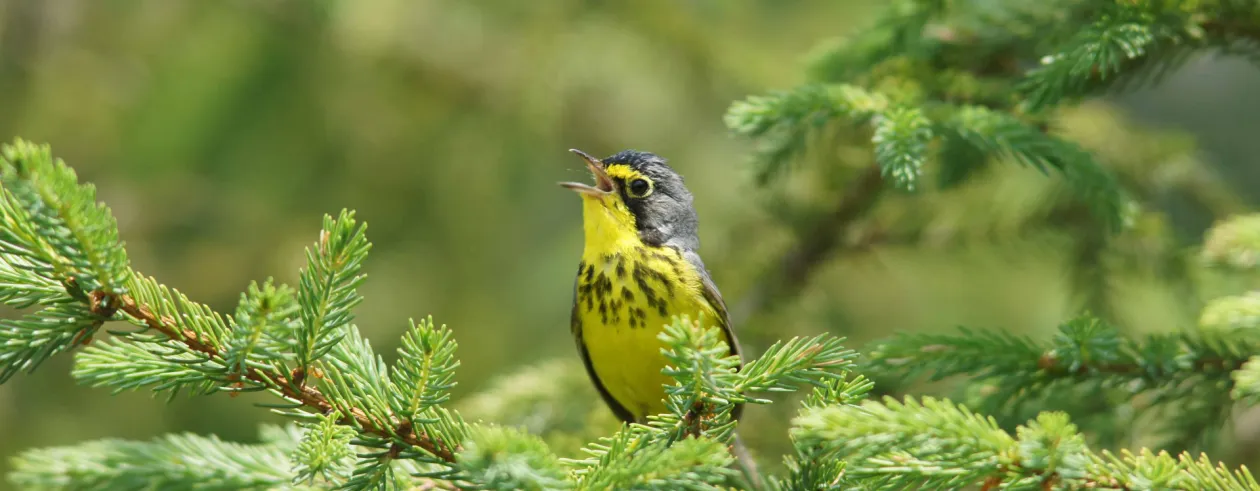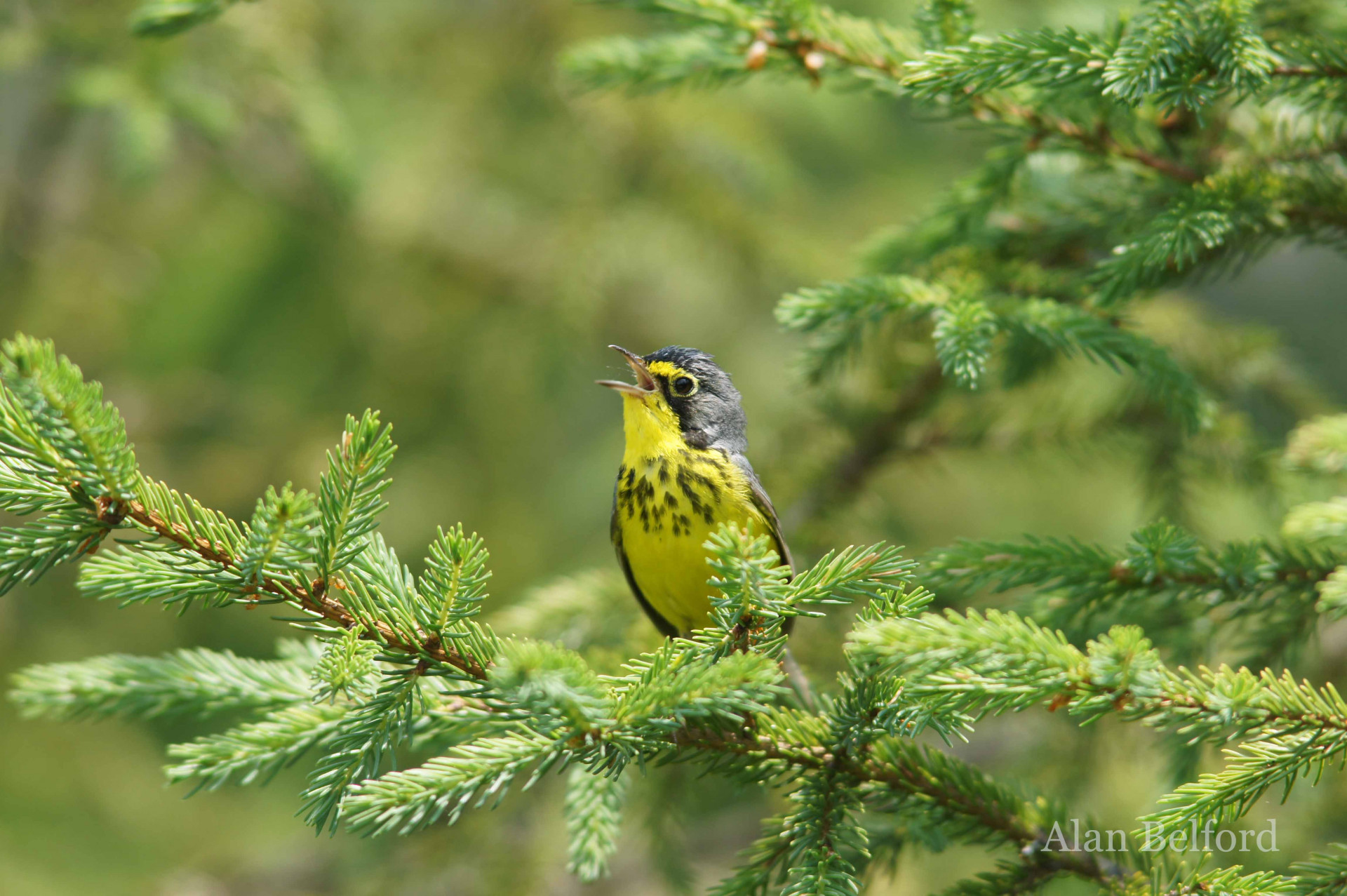
So Many Places to Explore
An Amazing Time of Year to go Birding!
With nesting season in full swing, it is a good time to think about local summer birding sites in and around Tupper Lake. After all, the tracts of wild forest and the assortment of habitats in the area make for excellent adventuring and birding opportunities. Here are a few places you should consider checking out.
Tupper Lake Marsh
Like many birding sites, the marsh which dominates the northern end of Tupper Lake on the edge of town is best visited early in the morning. This is true not only because the birds are generally more active at that time of day, but also because the marsh is most easily accessed from along Route 30 south of town, a stretch of road which can become busy as the day progresses.
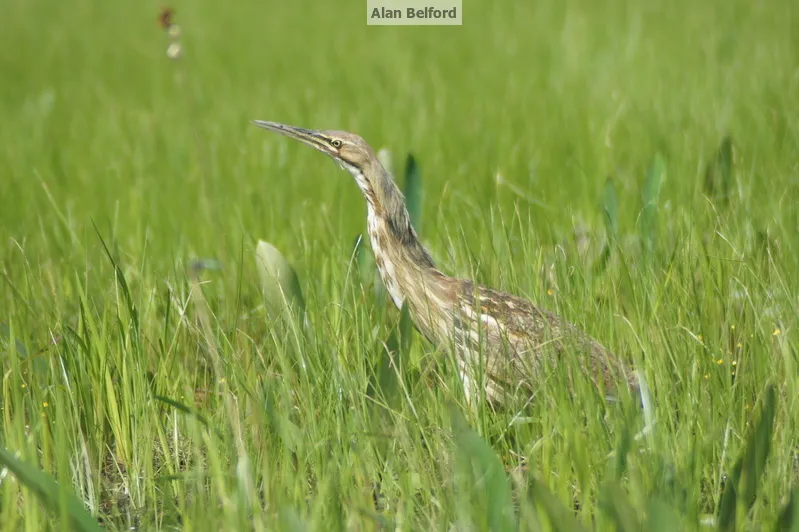
But even if traffic is becoming somewhat heavy, there are a number of pull-offs to help you get off the road: the wayside exhibit next to the bowling alley and across the street from Skyline Ice Cream (an additional benefit of stopping there), the pull-offs along the Route 30 causeway, and the boat launch south of town. All three locations give different angles from which to view the marsh, and the boat launch offers paddling birders a chance to launch a canoe or kayak and poke around the marsh for hours, away from the noise and bustle of the road.
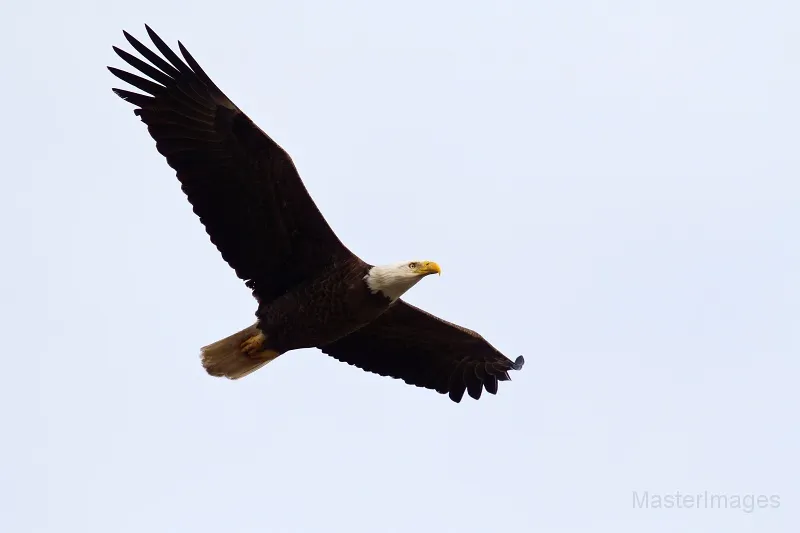
No matter how you choose to investigate the marsh, there will be plenty to see during the summer. From soaring Bald Eagles and Osprey to Great Blue Herons and American Bitterns (often best seen cruising low over the marsh early in the morning), the marsh is teeming with life. Swamp Sparrows and Marsh Wrens sing from the cattails, while the Tree Swallows and Barn Swallows scoop up insects overhead and Belted Kingfishers perch on bare branches along the shoreline. An evening trip may be rewarded with a hooting Barred Owl or a grunting Virginia Rail, and the surrounding forests and edge habitats offer species like Yellow Warbler, Eastern Kingbird, and American Redstart. And don’t forget that the marsh is the first place in the Adirondacks to host nesting Sandhill Cranes – which can often be spotted from Raquette River Road or Stetson Road in town.
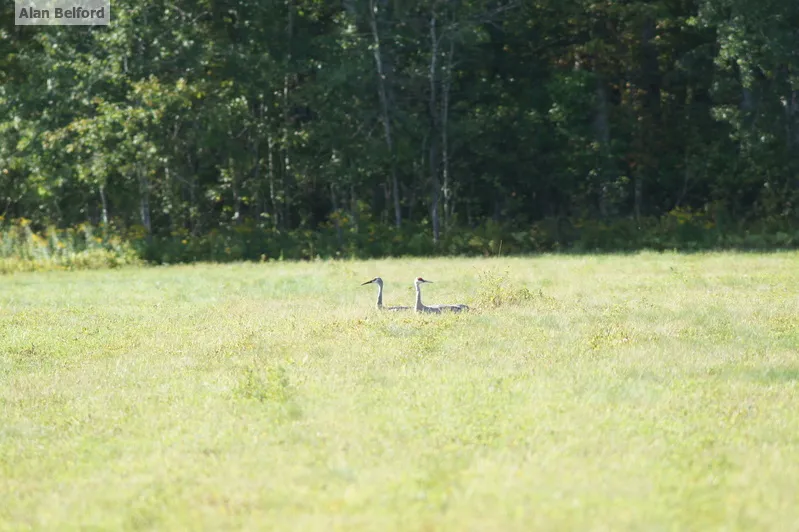
If that isn’t enough, the marsh and lake are also excellent during spring and fall migration for a wide array of ducks and other aquatic species. And you don’t even have to leave town.
Spring Pond Bog
But if you do decide to head out of town for an adventure, then Spring Pond Bog is a good place to choose. The second largest bog in the state, the Spring Pond Bog Complex sits entirely on private land – but many of the best sites, including Spring Pond Bog itself – are owned by The Nature Conservancy (TNC); birders must call the TNC office in Keene Valley (518-576-2082) for a permit.
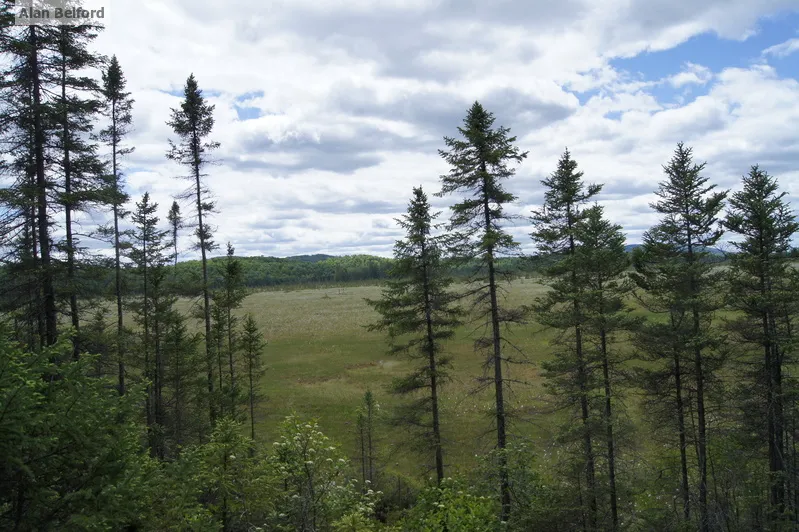
This permit allows you beyond the gate, which sits about five miles north of Tupper Lake along Pitchfork Pond Road (reached along Haymeadow Road from the west end of town). TNC provides a map through the complex – as it can be tricky for newcomers to navigate the twisting network of roads. To reach the esker trail which leads through the spreading bog itself, you will take two right turns in quick succession after passing through the gate, and then follow these roads (and the TNC map) for another 6 miles after making the second right.
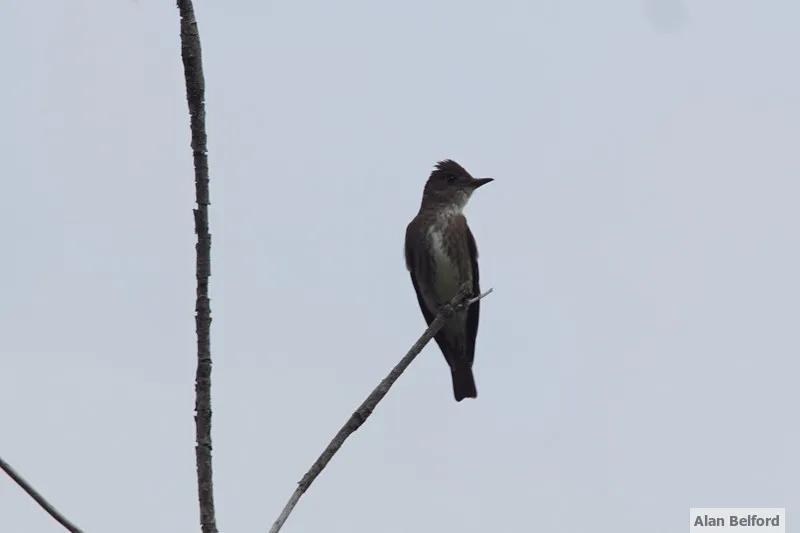
But don’t let the confusing nature of the roads (be sure not to block them for other cars) intimidate you. The rewards for winding through the roads begin even before the entrance gate thanks to the variety of habitats in the huge complex. These include lakes, deciduous forests, edge habitats, streams, and boreal forests, as well as the bog itself – and you will soon be amassing a list of birds which can include the likes of Common Loon, Black-backed Woodpecker, Philadelphia Vireo, Broad-winged Hawk, Olive-sided Flycatcher, Lincoln’s Sparrow, Alder Flycatcher, and Ruffed Grouse, among many others.
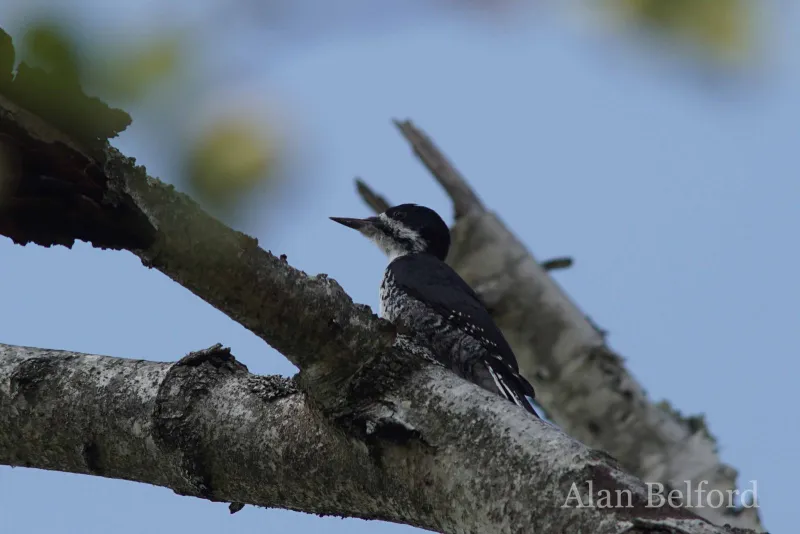
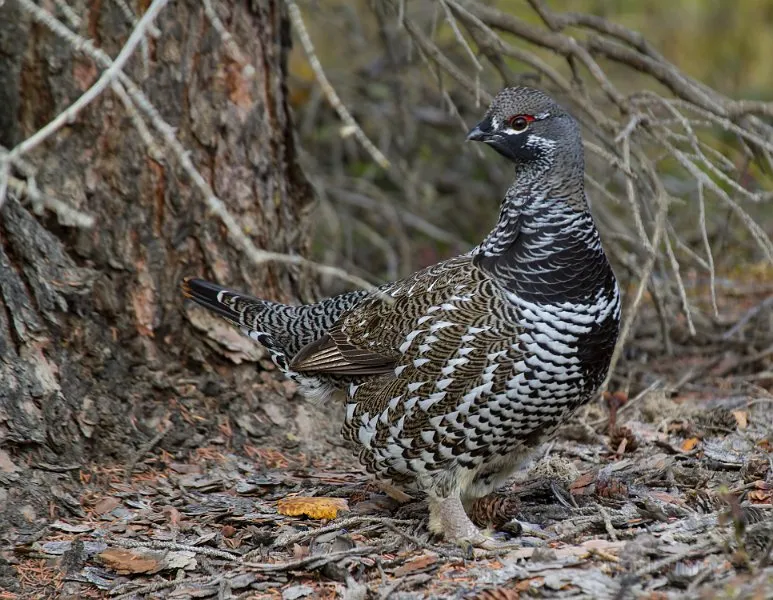
Far more numerous in the complex are the warblers, and the long list contains not only the boreal and coniferous breeders like Nashville, Canada, Palm, and Magnolia, but also deciduous forest and edge habitat breeders such as Chestnut-sided, American Redstart, and Black-throated Green. You will also be wise to note that Spring Pond Bog can be extremely buggy during the spring and first half of summer, so come with extra lightweight, long layers, bug nets, and the like, or be prepared to give blood!
Sabattis Bog
Another short drive – this time south from Tupper Lake – leads to Sabattis Bog, which, like Spring Pond Bog, sits on private land. However, the small bog is easily viewed from the side of Sabattis Circle Road, and it is a good idea to park and walk the road in search of avian quarry. Magnolia Warblers, Yellow-rumped Warblers, and Yellow-bellied Flycatchers sing from the trees, while Lincoln’s Sparrows and Palm Warblers declare their territories across the bog mat. Canada Jays may arrive inquisitively looking for a handout, and the boreal habitats also host other year-round species like Black-backed Woodpecker and Boreal Chickadee.
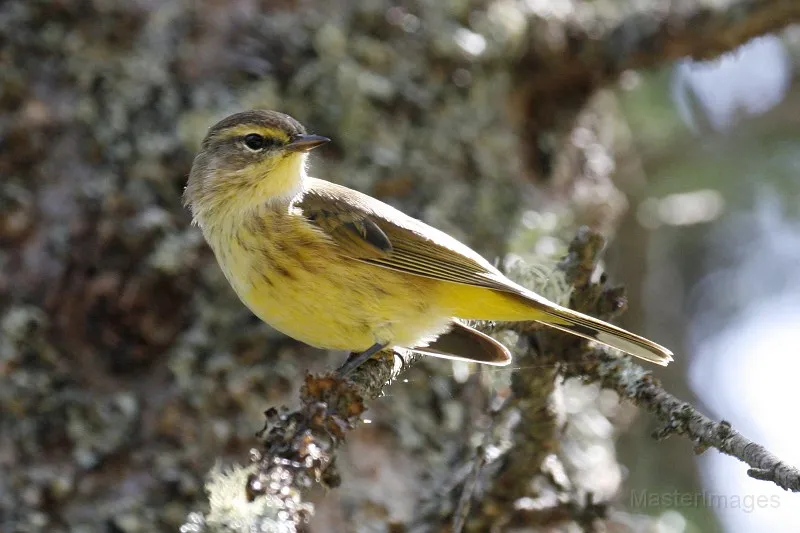
Sabattis Bog is also a great stop for anyone on their way to explore Little Tupper Lake, Lake Lila, and the rest of the William C. Whitney Wilderness Area, or the Round Lake Wilderness Area to the north. And once you’re done birding in the bog, the DEC headquarters on Little Tupper Lake offer restrooms and fresh water, and the beach area is a great place to launch a boat or to take a refreshing swim.
Summer is here – plan your next birding adventure by checking out our lodging and dining pages!
